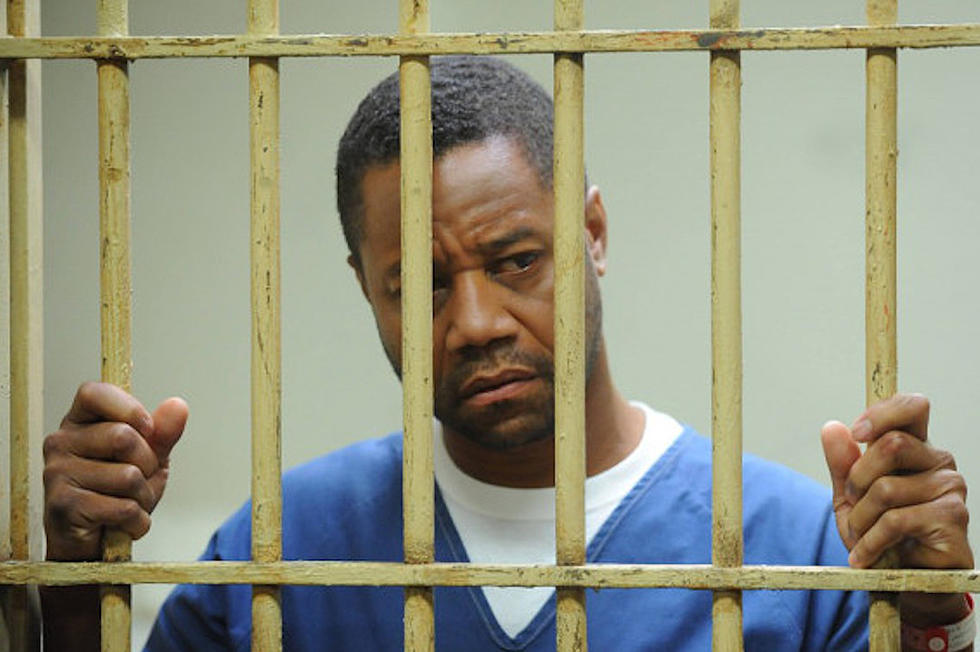
‘American Crime Story: The People vs. O.J. Simpson’ Episode 3 Recap: ‘The Dream Team’
At the beginning of the latest episode of American Crime Story, the audience is thrown straight into the thick of the media whirlwind that surrounded this case, highlighted by the fact that Robert Kardashian is now recognizable in public, but more importantly, by O.J.’s mugshot being plastered across every major magazine on newsstands in 1994.
Now that Simpson is in jail, each side begins to rev their engines, getting ready to go into battle. Marcia Clarke and the DA’s office have mountains upon mountains of evidence against him, and even seem to be garnering the vote of the public that O.J. is in fact guilty. Even Robert Shapiro begins to see the narrative sprawl out in front of him: between the glove and the blood trails and the Bronco escape, that it seem that Simpson has backed himself into a corner.
Every news station is commenting on the true sensationalism of Simpson and the crime, setting the scene for the idea that Simpson is one of pop culture’s most tragic heroes. Shapiro begins to assemble his troops, including both friends and enemies, all in the hopes that he can latch on to some small glimmer of hope that could help his client. The narrative begins to get painted that Simpson is a man whose good fortune is running out; that his public likability and standing in the court of public opinion is waning, which is only adding fuel to the fire his legal team is so desperately trying to put out. It’s the public downfall of celebrity, a meteoric downfall from icon back to human.
The DNA evidence is damning against Simpson, but Shapiro and his crew of slime balls aim to attack the evidence, imply that the handling and analysis of the evidence was butchered, and therefore the case has no standing. Though it has been a point of the plot, the racial story behind the story comes to fruition this episode, with magazines like TIME adapting the use of a darker image of the mugshot in order to imply and try to persuade the public that a darker black man is indeed a more dangerous man.
The idea of race and how it represented itself in the case, both as a singularity and in relation to the LAPD, become a crux for Simpson’s team. It’s no longer a case based around a double homicide, but rather a social injustice that the LAPD would treat an African American with such disdain, and so Shapiro finds his Achille’s heel in the race issue.
Being the crafty, no-holds-barred lawyer that he is, Shapiro takes this newfound weakness to the tabloids, using the media and tabloid frenzy to his advantage, and hopefully to Simpson’s as well. Now, it’s no a longer a question of guilty or not guilty, but whether this case is as racially charged as Shapiro seems to be implying.
He tells a reporter for The New Yorker that this is now a case about race, that Simpson is being targeted because he is a black man and that in and of itself, is a reflection of the innate conspiracy of the LAPD, even taking it to such great lengths as to imply the cops planted and staged the evidence that is Simpson’s downfall.
Marcia Clarke and her group of legal soldiers begin to craft their own story, but run into their own issues as well. Though the evidence against Simpson is compelling, they begin to lose some of their key witnesses to the media frenzy, making them unreliable in front of a jury. Clarke even begins to explore the fact of pressing charges against AC Crowley, the driver of the Bronco, because it could help proof the fact Simpson tried to escape.
In the midst of all this, Nicole’s 911 tapes leak to news outlets, providing audible proof of just how toxic and tormented Nicole and O.J.’s relationship was. Clarke and the DA begin losing an invisible battle against the media, between the witness and the magazine covers and the tapes, it’s evidence that the case has begun to reach its peak level of cultural influence.
Since Shapiro has taken it upon himself to craft this story under racial pretense, Johnnie Cochran finally comes to center stage. Though he has appeared in both previous episodes, he’s been a background player; an ancillary character used to comment on the rising issue of race and how it came to be a factor in this case. The New Yorker article instigated by Shapiro is the flame that is lit beneath Simpson in order to get him to order Cochran.
After the leaking of the 911 tapes, it’s painfully evident just how guilty Simpson seems to be, and no matter the spin, Shapiro can not save him anymore. They must lean into the race defense and lean into it hard. And so that is how this episode ends, with the case becoming racially charged, pitting Marcia Clarke and the DA’s office against Cochran and Simpson.
Stay tuned...
Celebrities Who Smiled in Their Mugshots
More From PopCrush









